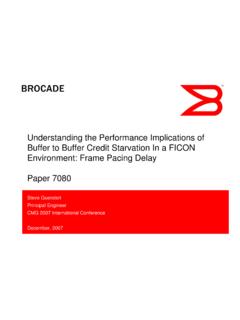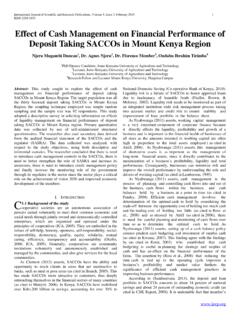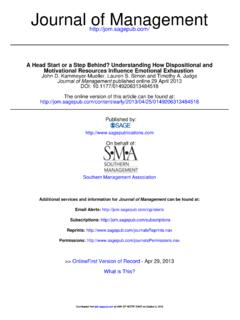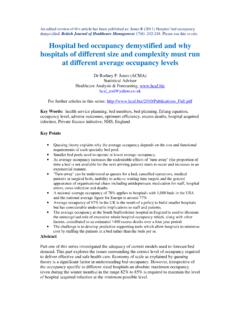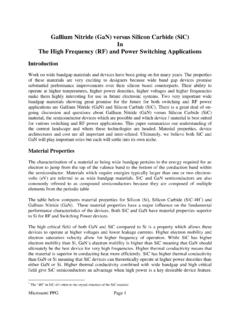Transcription of Space and U.S. Security: A Net Assessment - IFPA
1 The Institute for Foreign Policy Analysis, Inc. (IFPA), now in its thirty-third year, provides innovative ideas and assesses options and strategies to meet the security challenges/threats of the post 9/11 era. IFPA. conducts studies, workshops, and conferences on national security and foreign policy issues and produces innovative reports, briefings, and publications. IFPA's products and services help government policy-makers, military and industry leaders, and the broader public policy communities make informed decisions in a complex and dynamic global environment. With core staff offices in Cambridge, Massachusetts, and Washington, , the Institute maintains a global network of research advisors and consultants. Principal Investigator: Dr. Robert L. Pfaltzgraff, Jr.
2 For further information on this report contact: Dr. Robert L. Pfaltzgraff, Jr. President The Institute for Foreign Policy Analysis, Inc. 675 Massachusetts Avenue 10th Floor Cambridge, MA 02139-3309. Telephone: (617) 492-2116. Fax: (617) 492-8242. Tabl e of Con ten ts Foreword v E xecutive Summ ary ix Introduction 1. Space and National Securit y 2. The Spac e Deb ate 3. The E volving Space Environment 5. Present Space Strengths 5. Military Force Enhancement 6. Geodesy 6. Meteorology 7. Communications 7. Milstar represents yet another advanced Space -based military communications system 8. Navigation 8. Early Warning and Attack Assessment 8. Surveillance and Reconnaissance 9. Commercial Utilization of Space 11. Satellite Services 12. Satellite Manufacturing 13. Gap s in Space C apabilities 13.
3 Launch Services/Equipment Manufacturing 13. Missile Defense 16. Space -Based Kinetic Energy Missile Defense 17. S pace-Based Directed-Energy (L aser) Missile Defense 17. Space Situational Awareness 18. Space Vulnerabilities: Assessing Risk 22. Other Space Progra ms 23. China 24. Russia 28. Iran 30. European Space Activit y 32. The European Space Agenc y (ESA) 32. France and Space 35. Germ any and Space 36. Italy and Space 37. The United Kingdom and Space 38. Japan and Space 39. India and Space 43. Israel and Space 46. Conclusion 50. Appendix A: 53. The United States and 21st-Century Space Strategy: Vulnerabilities, Competitors, and Priorities Workshop Participant List and Agenda . Appendix B: 57. Areas of Consensus in Space Policies from Eisenhower to Bush . Appendix C: 71.
4 Meeting Summary of the Space and Security Net Assessment Experts Advisory Group Appendix D: 77. Executive Summary of the Independent Working Group Report on Missile Defense, the Space Relationship, and the Twenty-first Century Charts and Figures Table 1: Current Space -Based Surveillance and Reconnaissance Systems 10. Figure 1: Global Space Activity 2007 11. Table 2: and FAA Licensed Launch Vehicle Performance in 2007 13. Table 3: Russian Launch Vehicle Performance in 2007 14. Table 4: European, Chinese, Indian, Japanese, and Israeli Launch Vehicle Performance in 2007 14. Figure 2: Commercial Orbital Launches and Market Share by Country, 2003-2007 15. Table 5: JAXA Projected Launch Schedule 43. Foreword v The purpose of the Space and Security Net Assessment undertaken by the Institute for Foreign Policy Analysis (IFPA) is to survey the current status of Space activities and to draw comparisons with other countries that have developed Space programs in recent decades.
5 Our goal is also to project major trends into a 10-20. year timeframe to identify factors that may have important implications positively or negatively on the posi- tion of the United States relative to other nations as we move toward and into the 2020 timeframe. Because of the inherently dual-use nature of Space technology and the growing role of the commercial sector, this net Assessment takes a broad view of Space encompassing Space technologies for military uses and for commercial purposes. This net Assessment has been prepared as a contribution to the discussion about the future role of the United States as a Space -faring nation. There is substantial sentiment to the effect that the United States can avoid the weaponization of Space by restricting its future Space -related national security programs, including foregoing deployment of Space -based missile defense.
6 Therefore, our net Assessment includes a discussion of arguments about weapons in Space . How the debate about defense in Space is resolved will shape the types of Space -based capabilities that the United States deploys in the years ahead. How Space policy is translated into action depends vitally on levels of public understanding and support. The Space and Security Net Assessment encompassed several components (more below) including extensive research into the current and evolving Space programs of the United States and other nations as well as briefings and interviews with experts within and outside the government. The Institute also convened a Workshop in Washington, on December 14, 2007; prepared a paper on Space policies over the past five decades; and assembled an Experts Advisory Group to focus on Space policy issues specifically for this net Assessment .
7 Finally, the net Assessment also drew on and contributed to other IFPA program- matic efforts examining the heightened importance of Space in operations and security planning such as the Independent Working Group on Missile Defense, the Space Relationship, and the Twenty-first Century, and the work of Institute President Dr. Robert L. Pfaltzgraff, Jr. on the Department of State's International Security Advisory Board Space study. The Space and Security Net Assessment can be downloaded from the Institute's website at The December 2007 Workshop on the United States and 21st-Century Space Strategy:Vulnerabilities, Competitors, and Priorities was divided into three first examined the present status of the United States with regard to Space programs as well as vulnerabilities in Space ; the second discussed what other countries such as the People's Republic of China (PRC) are doing in Space and the implications for the United States; and the concluding session explored what actions the United States should take to build consensus and support to develop and implement the requisite Space strategy, Space policy, and Space capabilities.
8 This meeting, which was recorded and transcribed, provided the basis for numerous analytic inputs into this net Assessment as well as conclusions. Several meeting participants agreed that vulnerabilities in Space must be addressed. In particular, the military establishment is not thinking seriously enough about the vulnerability of our Space infrastructure to hostile actions ( , Chinese interdiction capabilities as evidenced by the PRC's January 2007 direct ascent anti-satellite test) even though we are increasingly dependent on Space for military operations. Mitigating the problem entails increased funding of missile defense (including Space -based interdiction), Space control assets, situational awareness, and a robust launch and replenishment capability. S pa c e a n d U.
9 S . S e c u r i t y vi Foreword It also requires the development of a concept for Space deterrence as an integral component of overall deterrence strategy and how it fits into the national security strategy of the United States. For example, a robust defense against missiles missile could furnish an antidote to nuclear proliferation making it more costly for nations to proliferate and therefore provide a basis for deterrence. At the same time, we must undertake an outreach program to help the Executive Branch, Congress, and the public understand the central role that Space plays in national security. Other issues that were discussed at the December 2007 Workshop are summarized. They included: The need for a Space deterrence component of national security strategy for which the United States should develop a declaratory policy addressing what actions the United States would take if a nation attacks our Space assets.
10 A Space declaratory policy would be an important element of Space deterrence and overall deterrence strategy as part of the New Triad set forth in the January 2002 Nuclear Posture Review (NPR) and which should form a part of the forthcoming Obama Administration nuclear posture review. Iran's attention to ancillary capabilities that provide leap-ahead defensive and offensive capabilities. In this regard Tehran is increasingly interested in electromagnetic pulse (EMP) capabilities and convert- ing its ballistic missiles from liquid to solid fuel. Iran's growing interest in EMP further underscores the need for the United States to develop both sea- and Space -based boost phase missile defenses. Moreover, Iran's augmented economic ties with China, particularly as a major oil supplier, provide Tehran with leverage to receive advanced military technologies/systems and technical support from Beijing for both its nuclear weapon's and ballistic missile programs, including EMP capabilities.
